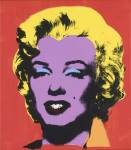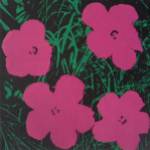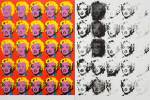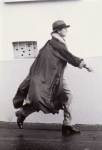Sturtevant, who died this week, spent her long career creating art that was instantly recognisable, only not as hers. Known for her deliberately imperfect ‘repetitions’ of other artists’ work, she was dismissed by some commentators as a copyist – even a plagiarist – but commended by others for her pertinence in an age that has seen a sudden and dramatic proliferation of images, most of them second-hand.
Sturtevant made her first reproductions in 1965, and reeled through the great names of the 20th century, from Duchamp, to Warhol, to Beuys, many of whom had made their own reputations by lifting and replicating images from popular culture. Hers was a challenging early response to the Pop art aesthetic, a sort of ‘meta-Pop’, if you will, that anticipated the controversial ‘appropriation art’ of the likes of Richard Prince and Eric Doeringer.
In the 21st century her work seems more relevant than ever, as the internet ushers in an expanding cloud of digital copies that obscure and threaten to override traditional notions of ownership. ‘What is currently compelling is our pervasive cybernetic mode, which plunks copyright into mythology, makes origins a romantic notion, and pushes creativity outside the self’, Sturtevant once commented. ‘Remake, reuse, reassemble, recombine – that’s the way to go.’
Sturtevant was the subject of a solo exhibition at the Serpentine Galleries last year, and a major retrospective is due to open at MoMA in November. The gallery below brings together examples of some of her most famous work, courtesy of Anthony Reynolds Gallery and Galerie Thaddaeus Ropac.












